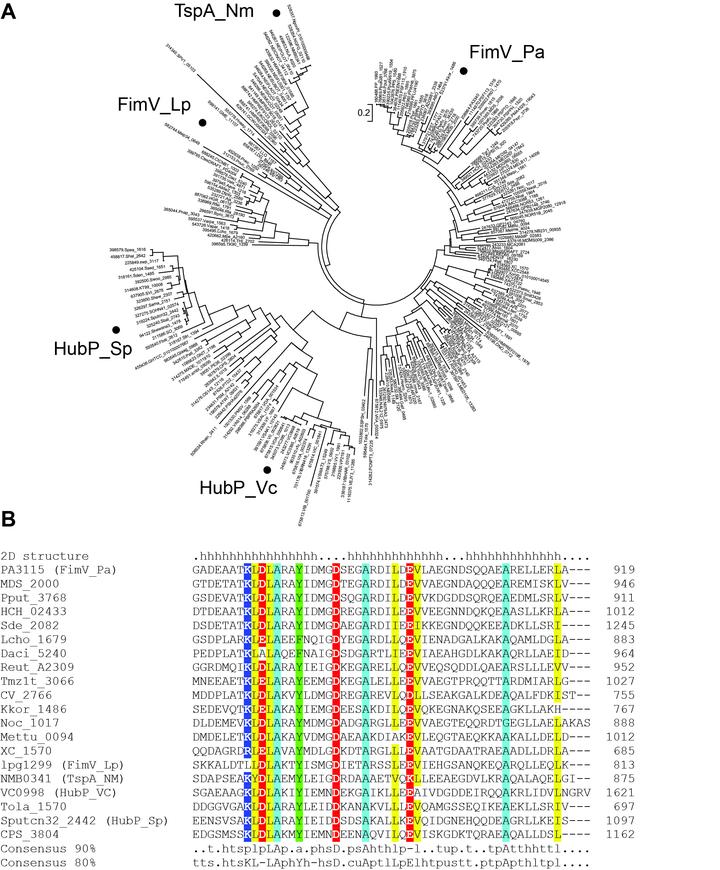The conserved TPR-containing C-terminal domain of Pseudomonas aeruginosa FimV is required for its cAMP-dependent and independent functions

Abstract
FimV is a Pseudomonas aeruginosa inner membrane protein that regulates intracellular cyclic AMP (cAMP) levels—and thus type IV pilus (T4P)-mediated twitching motility and type II secretion (T2S)—by activating the adenylate cyclase CyaB. Its cytoplasmic domain contains three predicted tetratricopeptide repeat (TPR) motifs separated by an unstructured region: two proximal to the inner membrane and one within the “FimV C-terminal domain,” which is highly conserved across diverse homologs. Here, we present the crystal structure of the FimV C terminus, FimV861–919, containing a TPR motif decorated with solvent-exposed, charged side chains, plus a C-terminal capping helix. FimV689, a truncated form lacking this C-terminal motif, did not restore wild-type levels of twitching or surface piliation compared to the full-length protein. FimV689 failed to restore wild-type levels of the T4P motor ATPase PilU or T2S, suggesting that it was unable to activate cAMP synthesis. Bacterial two-hybrid analysis showed that TPR3 interacts directly with the CyaB activator, FimL. However, FimV689 failed to restore wild-type motility in a fimV mutant expressing a constitutively active CyaB (fimV cyaB-R456L), suggesting that the C-terminal motif is also involved in cAMP-independent functions of FimV. The data show that the highly conserved TPR-containing C-terminal domain of FimV is critical for its cAMP-dependent and -independent functions.